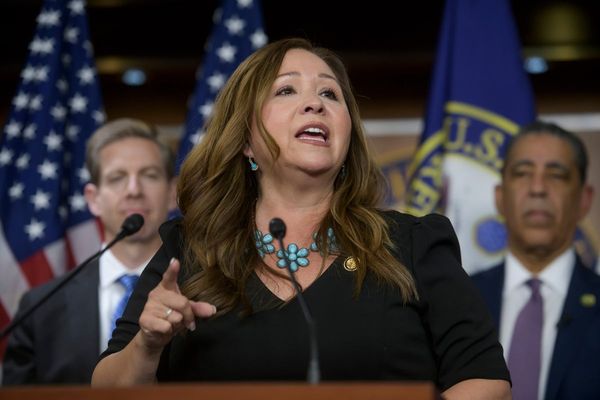

CONTENT WARNING: This article discusses body image issues.
On Wednesday, Britain’s Advertising Standards Authority (ASA) banned ads by fast fashion giant Zara because they made the models look “unhealthily thin”.
The ASA investigated four ads, banning two for breaching a rule of the code which requires advertisements to “be prepared with a sense of responsibility to consumers and to society”.
In one advert, ASA said shadows and a slicked-back hairstyle made the model appear “gaunt”, made her legs look “noticeably thin”, and said “the positioning of her upper arms and elbow joints made her look ‘out of proportion’.”
The second banned image focused on a model wearing a shirt in a pose that highlighted her collarbones. The ASA said the model’s positioning made “protruding” collarbones a “focal feature” of the advert.

In response, Zara took down all four images. However, the brand stated that it follows “stringent guidelines and controls in the selection and photographing of models”.
Zara also stated that the models were medically certified as healthy, in line with British guidelines, and they had only made minor lighting and colouring edits.
This is not the first time ASA has banned such ads. In July, ASA banned a Marks & Spencer ad for similar reasons, stating the clothing, such as the “large pointed shoes”, emphasised “the slenderness of her legs”.
Another retailer, Next, also had to take down an advert for blue skinny jeans in February, as ASA found “camera angles” used on the model’s legs were “irresponsible”. However, Next disagreed with ASA’s decision and said the model, while slim, had a “healthy and toned physique”.
The reaction
As someone who has experience with eating disorders, I can say that for many of us, the idealisation of thinness and the absence of mid to plus-size models in fashion has a significant influence over our relationship with our bodies.
And while thinness never went away in pop culture or the advertising realm, it feels like it’s being bolstered again with a decline in diverse body types at fashion weeks and the models that brands choose to feature.
Australia’s national eating disorder charity Butterfly found in its recent BodyKind Youth Survey that almost a third of young people do not see their body type represented in the media.
“This lack of representation could lead them to believe they need to change to be considered beautiful or successful,” Zoe Bradbury, Butterfly Australia’s Communications Manager, said.
Bradbury applauded ASA for “taking a strong stance against unrealistic beauty standards”.
“We must see a change in the fashion industry, and it would be a positive step forward if more diverse models, of all shapes and sizes, became the norm,” she said.
“You can’t be what you can’t see, and it’s concerning to think about the broader repercussions if advertising like this goes unchecked.”
However, ASA’s decision has been largely divisive. Some, like body confidence creator Alex Light, have praised ASA for taking a stand against the promotion and glamorisation of thinness, but noted the importance of focusing on body diversity in the entirety of the campaign, rather than focusing on the body of a single model in one advertisement.

“What will Zara do now this ad is banned? Likely they’ll use a slightly bigger — but still thin — model instead,” she theorised.
Others noted that ASA’s standards also have the potential to stifle ads featuring people in bigger bodies, with the difficulty in defining what “unhealthy” looks like and the outrage over mid to plus size being featured in ads already.
What was most jarring to me were the comments under Women’s Wear Daily’s Instagram post, with a majority of people saying “bring back skinny into fashion” and that people were “just jealous” of the models’ bodies. Some even accused the ASA of body shaming skinny people while obesity was “soaring”.
These comments highlight the fatphobia rife within our society, and I know younger me and many of us today would benefit greatly from seeing bodies that look like ours in ads, rather than being told that we will never meet the beauty standard because of the size of our bodies.
Where do we go from here?
ASA’s bans are not novel, by any means.
In 2000, big-name fashion magazines like marie claire banned using “unhealthily thin” models. In 2015, France passed a law requiring models who wanted to work in France to provide a doctor’s note confirming their overall health and an appropriate Body Mass Index.
At a time when thinness culture is stronger than ever, with Ozempic use and a decrease in mid to plus-size models, ASA’s bans can be seen as a first step to rejecting this culture and forcing brands to reflect on the angles and edits they use to glorify thinness.
However, it is also clear that the issue is systemic and goes deeper into the standards placed on models and our understanding of “beauty”.
Several studies, such as a 2024 Cambridge study, have found that “the persistent expectation for thinness in the fashion industry elevates the likelihood of eating disorders and body image disorder development among models”.
If brands opt for genuine diversity in their models, showcasing different body types, nationalities and abilities, they do have the power to influence the broader industry’s standards around thinness.
Help is available.
If you’re in distress, please call Lifeline on 13 11 14 or chat online. If it’s an emergency, please call 000.
Under 25? You can reach Kids Helpline at 1800 55 1800 or chat online.
Reach out to Headspace or Beyond Blue for support, or make an appointment with your GP.
The post Zara Ad Banned For Featuring ‘Unhealthily Thin’ Models. How Is This Still Happening? appeared first on PEDESTRIAN.TV .







